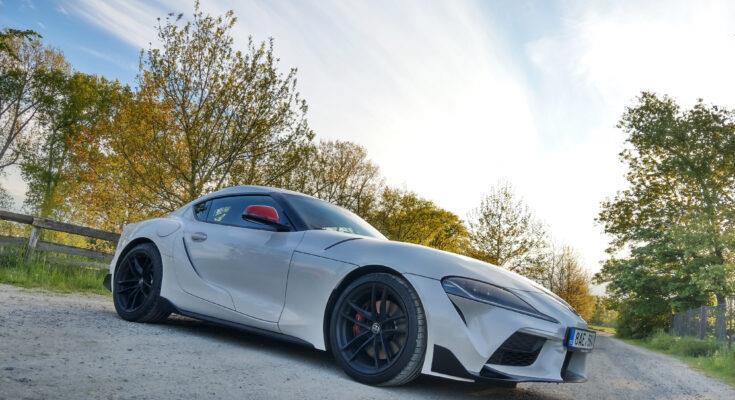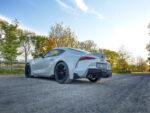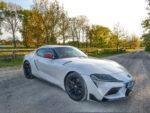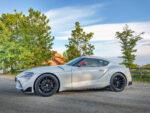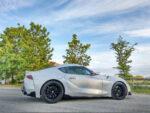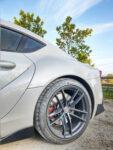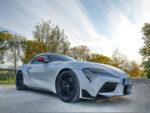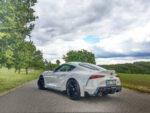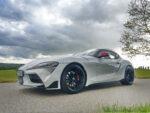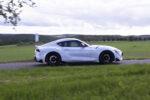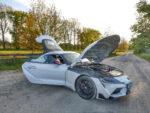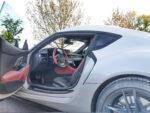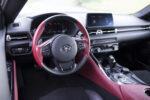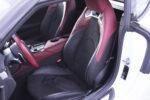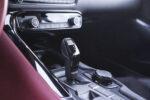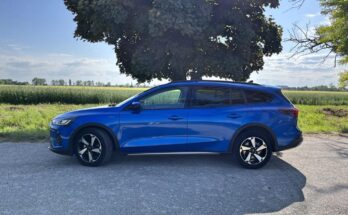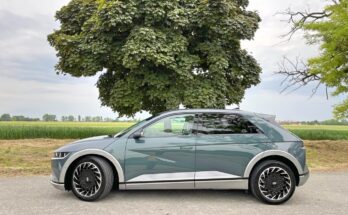We already had conflicting opinions regarding the purity of the new generation Supra during last year's editorial test of the "full-fat" three-liter variant. Personally, I would not return to them in any comprehensive way and would only state that it was thanks to the cooperation of Toyota and BMW that this generation could be created at all. And it is quite clear that Toyota could not have chosen a better partner for this case.
Unfortunately, the editorial test of the aforementioned three-liter Supra is over, but I have to admit that I still remember it to this day. While absorbing all the information about the new generation, I of course registered the possibility of a two-liter alternative under the hood, but emotionally I was quite skeptical about this choice.
But now we got our hands on its rather more "people's" variant with a two-liter turbocharged two-liter. In addition, the tested car had the Fuji Speedway limited edition, which enriched the car with an adaptive chassis, an active differential, a better exhaust system, or 19" forged wheels.

In terms of exterior design, the current fifth generation Supra is a very cool car. The side profile will offer an unusually long bow, which is followed by a relatively modest cockpit, immediately behind which are the rear wheels with a minimal overhang of the rear part of the body.
Another interesting feature of this lot is the massive shaping of the lower part of the car, the sill, which gradually passes through the side doors to the rear fender of the car, giving it very original and massive shapes. The joy of watching this party in the rearview mirrors.
The front part is equipped with originally shaped front lamps, which have a long line of daytime running lights in their lower part and give the car a very characteristic light signature. The front bumper is then dynamically "cut through" by massive intake holes. Intake openings have unfortunately become quite a hot topic for the new Supra, because not everyone has a functional justification.
The front view is highlighted by the interestingly shaped roof, which is significantly raised above the head of the driver and passenger. Also very elegant is the low front window, which gradually transitions into the side glazing, which slopes significantly and copies the profile of the roof itself.
The rear part is a design pearl and an imaginary successful ending to the entire shaping of the car. Here, the Supra is equipped with an integrated "ducktail", horizontally oriented lamps that emerge from an imaginary cut in the body, or a pair of distinctive exhaust tips.
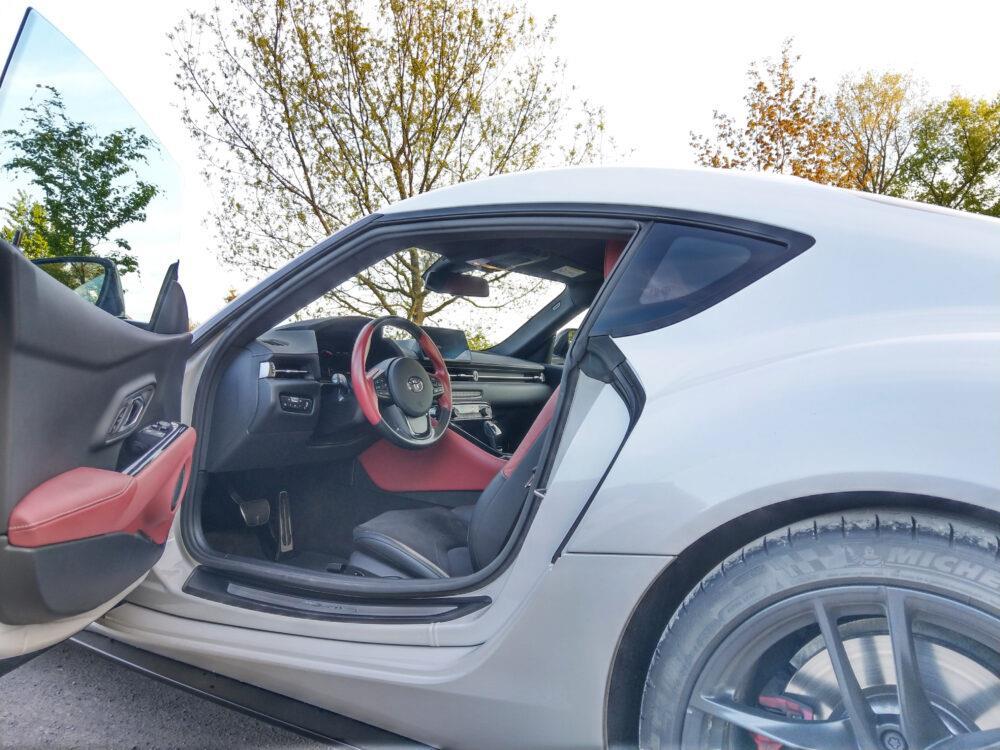
Getting into the car is somewhat more complicated due to its low construction, the interior space is quite logically rather cramped, everything is quite adequate for a two-seater sports coupe. A massive central tunnel, a low roof including front and side glazing, all of this can surround you very pleasantly in the case of the Supra.
The dashboard of the car follows the architecture of the Toyota car company, it will offer a strictly horizontal division, which is supported by a prominent line with integrated air conditioning vents. The dashboard then, following the pattern of the entire interior, has a very calm and even slightly settled impression. Fortunately, the limited edition Fuji Speedway has positively enlivened the entire interior with red accents.
The Supra's digital instrument panel is dominated by a large tachometer, from which a smaller on-board computer display emerges. A discreet digital speedometer is located in the left part.
The central part of the dashboard most evokes BMW cars. The Supra here works with an older version of infotainment from BMW. It is evident in the environment of the main display itself, or in the control elements of the center panel, which is equipped with the well-known BWM iDRIVE rotary controller. The same applies to the selector of the excellent ZF eight-speed automatic.

The internal ergonomics of the Supra work excellently and thanks to its internal "space saving" everything is within easy reach. I must also praise the seats, which offer good adjustable lateral guidance.
The luggage compartment has a volume of 290 l and, thanks to the large hinged lid, it is relatively easily accessible throughout its floor plan.

Under the hood of the tested "more popular" version was installed a turbocharged two-liter, which is already tested by cars belonging to the BMW concern. It is therefore a regular four-cylinder supercharged with a two-chamber turbo, tuned to a power of 190 kW in Supre.
The announced power is available in the range between 5000 and 6500 revolutions, the torque then reaches a value of 400 Nm available in the range of 1550 and 4400 revolutions. The engine's reactions to the gas pedal command are exemplary.
With this engine, the Supra manages 100 km/h in a very respectable 5.2 seconds, and its maximum speed is limited to 250 km/h. Thanks to the smaller engine, the car is 100 kg lighter, and you can easily tell from its driving performance. The Supra is better balanced and the reduction in kilograms has had a positive effect on the front axle and the steering.
My anticipated fears about the two-liter under the hood dissipated unexpectedly quickly. It was enough to drive a few hundred meters and it was clear that this editorial week was going to be one of the more fun ones. In turns, the two-liter Supra is more controllable and significantly more stable. Nevertheless, it does not lack a certain dynamism, tremendous explosiveness and, thanks to the active differential, also playfulness. In normal mode, it is beautifully supple, usable on a daily basis and consumes around 8.5 liters per 100 km.
The motorization cooperates with a great eight-speed ZF gearbox, which shifts simply excellently. Changing individual qualts is very fast and logical, of course with the option of shifting paddles under the steering wheel. In basic mode, it shifts beautifully smoothly and allows the engine to roll over slightly, in sport mode it tightens up significantly in its behavior and also starts to "kick" pleasantly when downshifting. Sample engine and transmission cooperation.
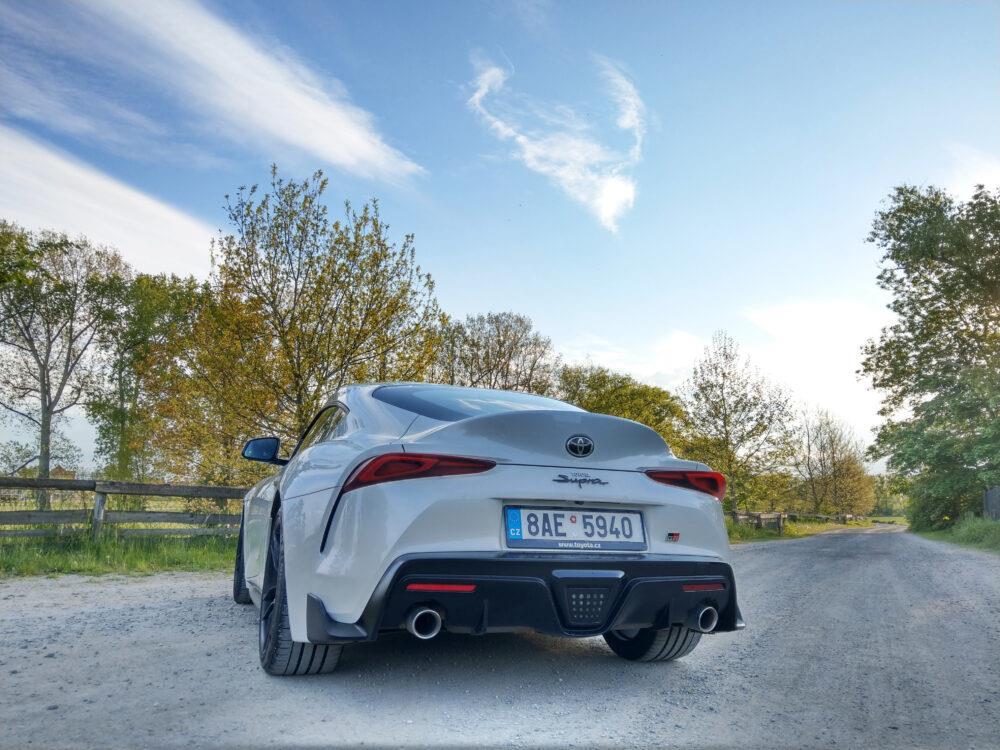
The price list for the new Supra starts at CZK 1,250,000 including VAT, it is a tested two-liter with an eight-speed automatic ZF transmission and Dynamic equipment. Be sure to pay extra for the SPORT PACKAGE, which, in addition to sports pedals and brakes, adds an adaptive chassis and an active sports differential to the car. The second offered three-liter variant can be purchased in the Executive trim level from CZK 1,800,000 including tax. There is therefore a noticeable financial difference between a two-liter and a three-liter, which I personally do not think is quite adequate to the difference that both cars will offer you in terms of driving characteristics and driving experience.
"The fifth generation Toyota Supra is definitely a great car that can be very fast, great fun, and even everyday use. All this is then presented to the user in an incredibly stylish package". I simply took this conclusion from last year's editorial test of the three-liter version, because the same can be said for the currently tested two-liter, which makes up for a certain lack of performance with lower weight and the associated greater controllability.
Source: Author's text
Image source: Author's own photos

